The United States is a market leader in many of the world’s largest crops. Cultivation of cereal crops for other uses, including cereals, human food and livestock feed, industrial starch, and biofuels. Cereal cultivation varies widely in different countries and depends on the degree of economic growth. Other factors include soil type, rainfall, and techniques to promote growth.
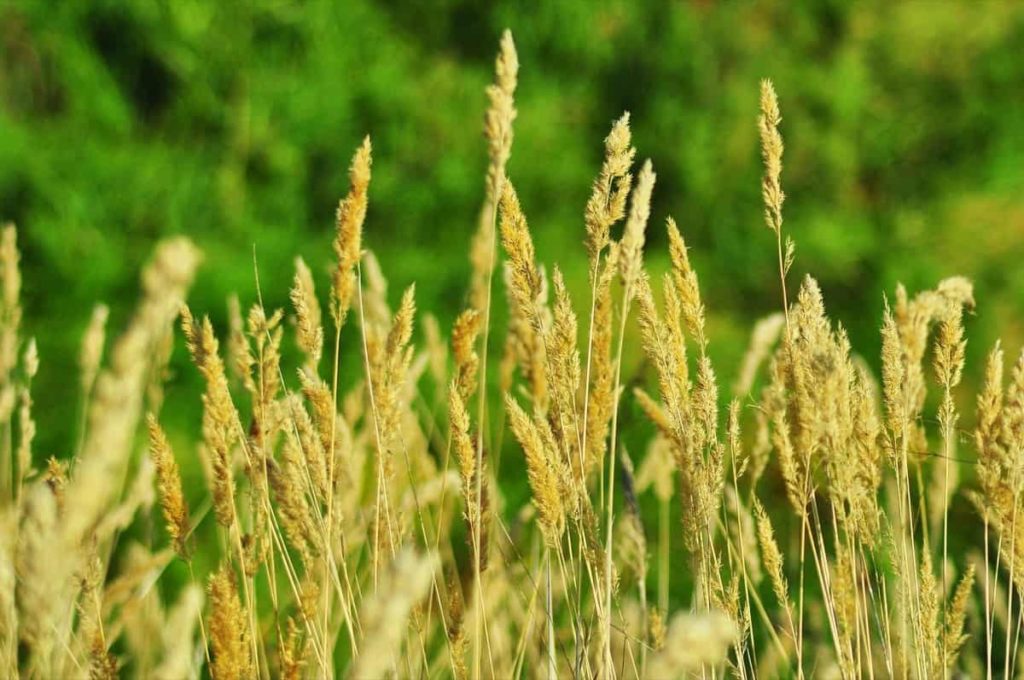
Under grain production, land refers to the cultivated area, although some countries report only sown or cultivated areas. Cereals include Wheat, Rice, Corn, Barley, Oats, Rye, Buckwheat, and mixed grains. Cereal production figures relate only to crops harvested for dry grain. Cereal crops harvested for grass or green for food, feed, or silage and used for grazing are excluded.
There are many reasons why cereal crops are such an important crop. One more of these grasses is available in the world’s different climates. In the northern region, Barley and Rye; in temperate regions, Wheat and tropical regions and in temperate regions, Rice and Maize. They can be cultivated with less effort and yield more.
Cereals are relatively easy to handle and store because they are low in water, and their food is very expensive. Cereals contain a lot of carbohydrates, plenty of protein, some fats, and any other food plant. There are even vitamins. In modern times the quest for greater crop yields has sometimes sacrificed flavor, and low crop-yielding varieties that may possess quality characteristics are gradually being ignored or even lost.
Cereal farming in the USA
Cereal cultivation practices in the USA
Cereal cultivation varies widely in different countries and depends on economic development. Cereal production depends on the nature of the soil, rainfall, irrigation, quality of seed, and techniques used to promote growth. In developed countries, grain crops are usually harvested by machine, using a combine harvester, which harvests, threshes, and winnows grain in a single passage across the field.
In many industrialized countries, especially in the United States and Canada, farmers usually deliver their freshly harvested grain to a grain lift or storage facility that strengthens many farmers’ crops. In developing countries, various harvesting methods are used to grow grain, depending on labor costs, from small combined harvesters to hand tools such as the scythe or cradle. Crop production systems have developed rapidly over the past century.
As a result, crop yields have increased significantly, resulting in soil degradation and erosion, pollution from chemical fertilizers and agrochemicals, and biodiversity loss. There are also unwanted environmental side effects. Factors such as the Green Revolution have made impressive progress in increasing grain production over the past few decades. However, this development is not the same in all regions.
Sustainable development depends on maintaining agricultural research and education. Grain cultivation varies widely in different countries and depends on the development of the economy. Yield depends on soil type, rainfall, irrigation, seed quality, and techniques used to promote growth. Agriculture is a major sector in many economies, and agricultural activities give food and income to developing countries.
In case you missed it: Post-Harvest Technology of Cereals, Pulses, and Oilseeds
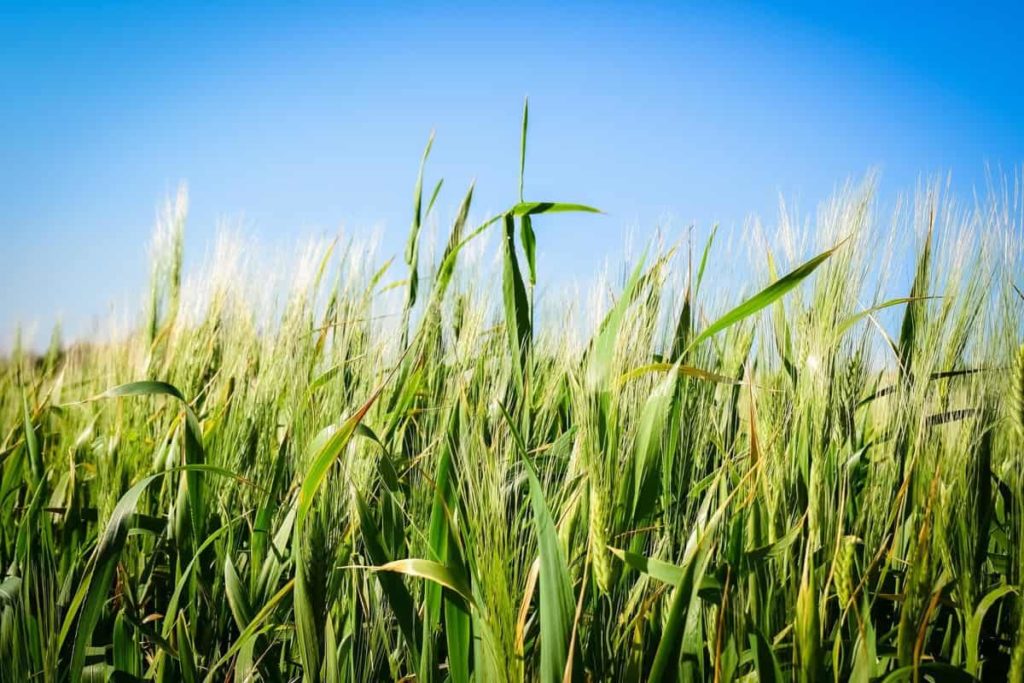
But agricultural activities can also damage natural resources. Efforts to increase productivity through chemical fertilizers, pesticides, and intensive irrigation have environmental costs and health effects. Salting irrigated land reduces soil fertility. Thus, improper use of input for agricultural farming has far-reaching effects.
Then, there is no correct mix of inputs in agricultural land, as it depends on the local climate conditions, land quality, and economic development. Appropriate application rates vary over time and depend on crop type, climate, soil, and the production process used.
Cereal crops cultivated in the USA
The grass family includes more than 9,000 species worldwide. Thirty-five of them have been cultivated as cereals. Of these, the following are important cereals in the USA.
Barley farming in the USA
Idaho produced the most Barley in the United States, followed by Montana and North Dakota. In the United States, about three-quarters of what is currently cultivated is used to produce malt. The rest is used for livestock feed or human feed. The human food segment is small (~ 4%) but growing in importance. Barley is also grown as fodder.
In most cases, there are specific types of Barley that are best suited for each of them. Some Barley varieties can be used for more than one purpose, and in many cases, their final use will depend on how they have been managed and the characteristics of the harvest time. High-quality feed barley with high protein levels and test weight is essential for low protein levels and plumpness.
Barley varieties are classified into either six rows or two rows, depending on the physical arrangement of the kernels on the plant. Barley is also called hulled or hull-less because of the beards covering the kernels. Although the six-row barley varieties traditionally grown in North Dakota, Minnesota, and Idaho were predominant, the two-row varieties are currently dominant in those states, as is the rest of the United States, where winter and spring are prevalent.
There are both types of Barley. Most production in the United States uses spring varieties. Growing winter varieties is not an option in the northern United States because the available varieties do not survive the winter. Some important cereal cultivating places in the USA are Idaho, North Dakota, Montana, Colorado, Wyoming, and Washington.
Corn farming in the USA
Corn production has increased over time as more production technologies (seed varieties, fertilizers, pesticides, and machinery) and production methods (reduced tillage, irrigation, crop rotations, and pest management systems). Strong demand for ethanol production has led to higher maize prices and has incentivized farmers to increase maize acreage.
In many cases, farmers have increased the area under maize by adjusting crop rotation between maize and soybeans, which has reduced soybean cultivation. Corn is an essential part of the United States in the significant Cereal group. Maize was thought to have originated in a wild state in the lowlands of southern Mexico and Central America, from where it spread to the Andes, where its cultivation dates back to prehistoric times.
In case you missed it: Corn Farming in USA: How to Start, Production by State, and Cultivation Guide
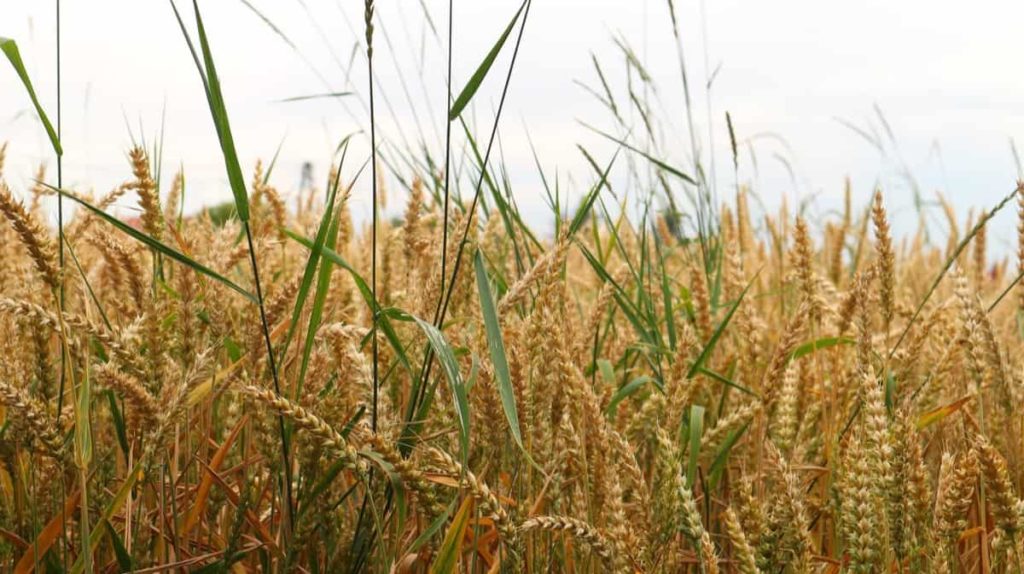
As annual summer corn, certain environmental conditions are required for proper growth. This plant performs best in fertile, weak, well-drained alveoli, deep, warm river layers, and dry swamps. These soils should be high in organic and nitrogen and should not be cooked. Furthermore, temperature, sunlight, and humidity are limiting factors. Corn primary growing areas are Illinois, Nebraska, Minnesota, Indiana, Kansas
Oats framing in the USA
Many producers grow oats because they fit into most crop rotations, perform well on various soils, cultivate the soil, and help prevent soil damage. The major oat-producing states are South Dakota, North Dakota, Iowa, Minnesota, Wisconsin, and Nebraska. Oats are usually grown in summer or autumn. Like most crops, a good plant starts with good soil preparation. Oats grow best when planted in dry soil.
Like Wheat, some farmers prepare the soil through cultivation, and some do not depend on the size of their farm. They use machines like tractors and heroes to sow seeds till the soil. Oat seeds are usually planted in early summer or early fall and remain dormant in winter. Because oats require cold weather to grow, they are mostly grown in the northern parts of the Midwest. During the winter, the seeds germinate to store energy until it is time to germinate.
Oat plants finally begin to grow in the spring when the weather is warmer. Oats can be grown under different crop patterns. They can be planted as a companion crop to grass or bean seeds, as a cover crop to prevent wind and water erosion, or for pasture, grain, straw, or all three. Spring or northern white oats are the most common variety in the United States.
Other species are red oats (grown in the south) and gray oats (grown in the northwest). Spring oats are usually planted in April and May. Seedbeds can be prepared with a disc, moldboard, or chisel plow, and the soil must be well-drained.
Rice farming in the USA
The Rice crop prefers a climate with an average summer temperature of less than 25°C. It grows best on moist soil below with semi-immature subsoil in areas where it can flood. The United States produces abundantly in the southeastern states and California, Arkansas, and Louisiana. American long-grain rice production is concentrated in the south (Arkansas grows about 56–58% of the US long-grain crop.).
California is a major producer of rice, which grows 69-76 percent of the crop. However, Arkansas grows plenty of medium-sized grains, especially in the years when California is experiencing a drought. Louisiana usually grows very small amounts of medium rice. Short-grain rice is grown exclusively in California. All American rice is grown in irrigated fields, which have the highest yields in the world.
In the United States, producers can plant seeds in the air in flooded fields or drill or broadcast seeds in dry fields. California producers sow mainly in flood-affected fields, mainly through the air. In the Delta, most producers drill or broadcast the seed in dry seed, while farmers in southwest Louisiana and the Gulf Coast of Texas sow the seed in the air in flooded fields and drill or broadcast the seed in the dry seed. USA Rice represents rice growers in Arkansas, California, Louisiana, Mississippi, Missouri, and Texas, the six largest rice-producing states.
In California, production is dominated by short- and medium-sized japonica varieties, including crops grown for local climates, such as Calrose, which makes up 85% of the state’s crop. The broad range of rice grown includes long-grain, medium-grain, and small-grain rice. Each year, rice farmers in the USA sustainably grow roughly 20 billion pounds of rice in Arkansas, California, Louisiana, Mississippi, Missouri, and Texas.
Half of the rice crop is eaten in the United States, where 80% of the rice is consumed locally. However, the other half of the crop is exported to more than 120 countries worldwide. The American rice industry provides important jobs in rural areas across the country. The rice industry contributes more than $34 billion annually to the US economy and employs more than 125,000 people in the United States.
In case you missed it: Ways Wheat Farming Make You Rich in a Short Time
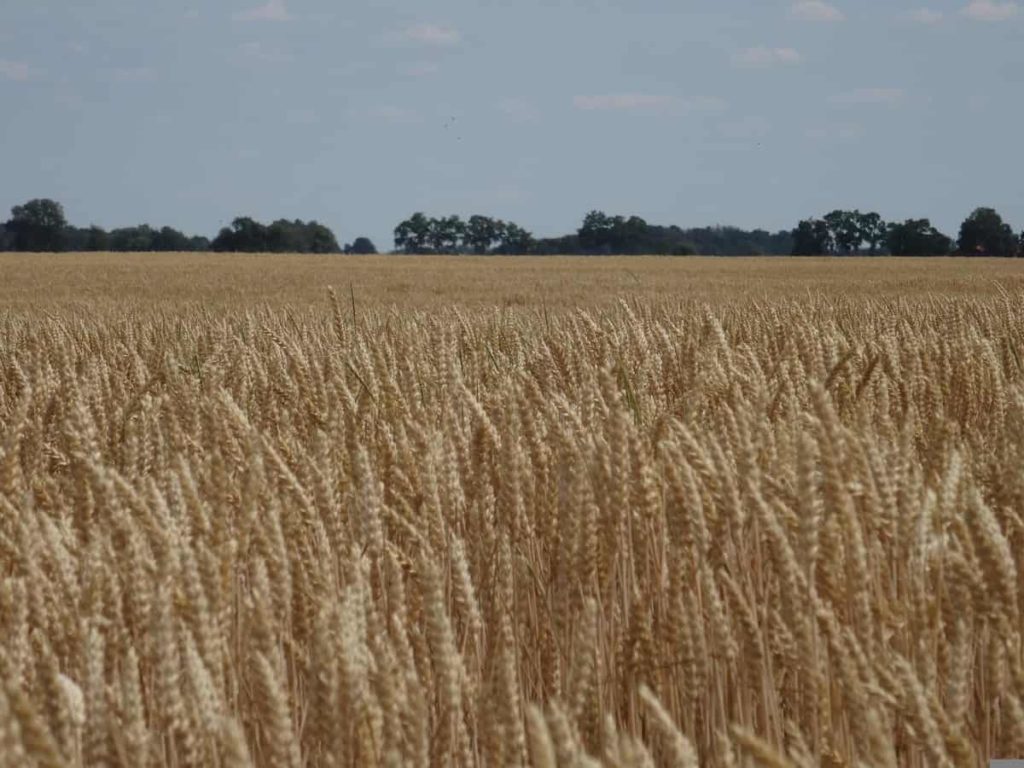
Sorghum farming in the USA
Sorghum is an important hot crop in the grass family. Sorghum is grown in over a dozen US states but is a major crop in Kansas, Texas, Colorado, Oklahoma, Nebraska, and South Dakota. The average yield for the United States was 69 bu per acre, although production limits change from state to state.
The most commonly planted genotypes in the United States are hybrids, which means that farmers cannot use the saved seeds and expect to retain the genotype performance. Farmers should use impartial ground grant university trial data when choosing a hybrid. In addition to production, resistance to pests and diseases and length of maturity should also be considered.
A desiccant may be recommended to facilitate early harvesting to avoid weather-related damage and bird damage. The USA is the largest exporter of millet, accounting for about 75% of world trade. In the United States and other countries worldwide, millet grains are used primarily for livestock feed and ethanol production but are gaining popularity in the consumer food industry.
The stems and foliage are also used for green harvesting, hay, silage, and pasture. About one-third of the American sorghum crop is used to produce renewable fuels. Sorghum is more tolerant of wet soil and flooding than most grain crops – an interesting phenomenon in terms of its drought tolerance. However, mostly poorly drained, wet soil is too cold for grain sorghum in Wisconsin and Minnesota.
The nutritional requirements of sorghum are similar to the requirements of com in that sorghum uses relatively high amounts of nitrogen and moderate amounts of phosphorus and potassium. Almost all grain sorghum is harvested with a combine as a standing crop. Combination time will depend on the fall season and the availability of grain drying facilities.
Sorghum grains can be cleaned head-free when the moisture content of the seeds is 20-25%. The seed matures physically at even higher moisture levels. Frost usually kills the tops of the plants and helps reduce moisture. Some hybrids have loose, open heads that speed up field drying.
Wheat farming in the USA
Wheat is the third-largest crop grown in the USA. The United States produces hard red, soft red, and white winter wheat and hard red and dorm spring seed varieties. Very small amounts of white spring wheat are also grown. Wheat is a staple food grown in the United States. The three main types of locally sown grains are winter wheat, spring wheat, and durum wheat.
North Dakota, Kansas, and Montana were the top wheat-producing states in the United States. In the spring, plant growth resumes and grows rapidly until the summer harvest. Winter wheat production averages about 70% of total US production. Wheat is best suited to moderate dry temperate climates and is not grown in hot, humid areas.
A climate of at least 90 days and annual rainfall of not less than 9 inches is required. More than 30 inches of rain is harmful. Areas where cool, moist springs merge into warm, bright, dry harvest periods, are usually the best, but different types of Wheat vary in their needs. The major Wheat-producing states are Kansas, North Dakota, Montana, Washington, Oklahoma, Idaho, Texas, Oregon, Minnesota, South Dakota, and Colorado.
In case you missed it: Top 20 Steps to Boost Wheat Yield: How to Increase Wheat Production
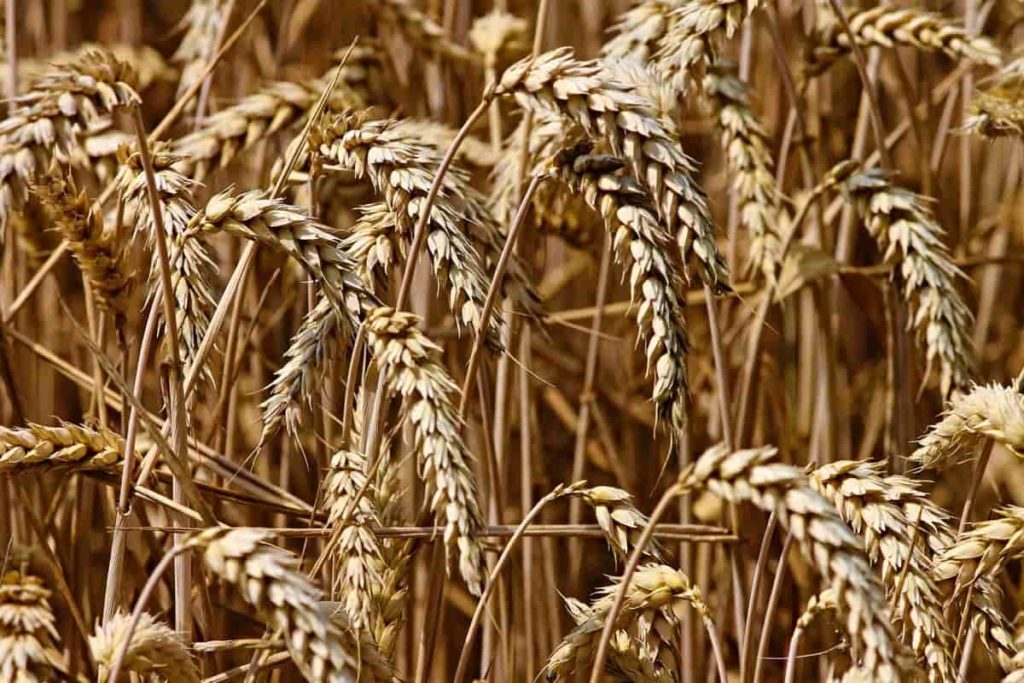
Further Wheat classification can be as follows:
- Hard red winter wheat (HRW), which produces 40%, is mainly used in flour production, which is grown in the highlands. It grows from Texas to the largest producing state, Kansas, and continues throughout the north to Dakotas and Montana.
- Hard red spring (HRS) wheat (including Dark Northern Spring Wheat is also subdivided) high protein value, and approximately 20% production is preferred for making high-quality bread from North Dakota, Montana, Minnesota, and South Dakota.
- Soft red winter (SRW) wheat with an average production of 20%, raised in the states of Ohio, Kentucky, Indiana, Washington, Oregon, Idaho, Michigan, New York, and the Southeast; the flour from this type is used in making cakes and crackers.
- White Wheat variety accounts for an average of about 12.5% of production in Washington, Oregon, Idaho, Michigan, and New York states with its flour used in making products of soup noodles, crackers, cereals, and white-crusted bread.
- Durum wheat is the preferred variety for making pasta, grown mostly in the states of Arizona, North Dakota, and Montana, with an average production level of 4%.
- The byproducts from milling the above varieties are used to feed animals.
Rye farming in the USA
The USA is a major Rye producer. Rye is grown here in the USA as a cereal crop, mainly in Georgia and Oklahoma. Cheap and easy to establish, rye outperforms all other core crops on barren, sandy, acidic soils or poorly prepared soils. It is widely adaptable but grows best in cold, temperate regions. Growing taller and faster than Wheat, rye can break the wind and trap snow or prevent rain in winter. For example, rye is one of the easiest crops you can choose to grow.
It grows well even in very poor soil, which requires little work. It is also much cooler than Wheat. Rye can be grown in wider environmental conditions than any other small grain. Winter rye is the hardest of all grains in winter. Rye usually grows well during the colder temperatures in late autumn and begins to grow much faster in early spring. However, rye cannot survive the winter in potholes or other wet areas where water accumulates form.
In case you missed it: Growing Wheatgrass In Containers, Indoors Information
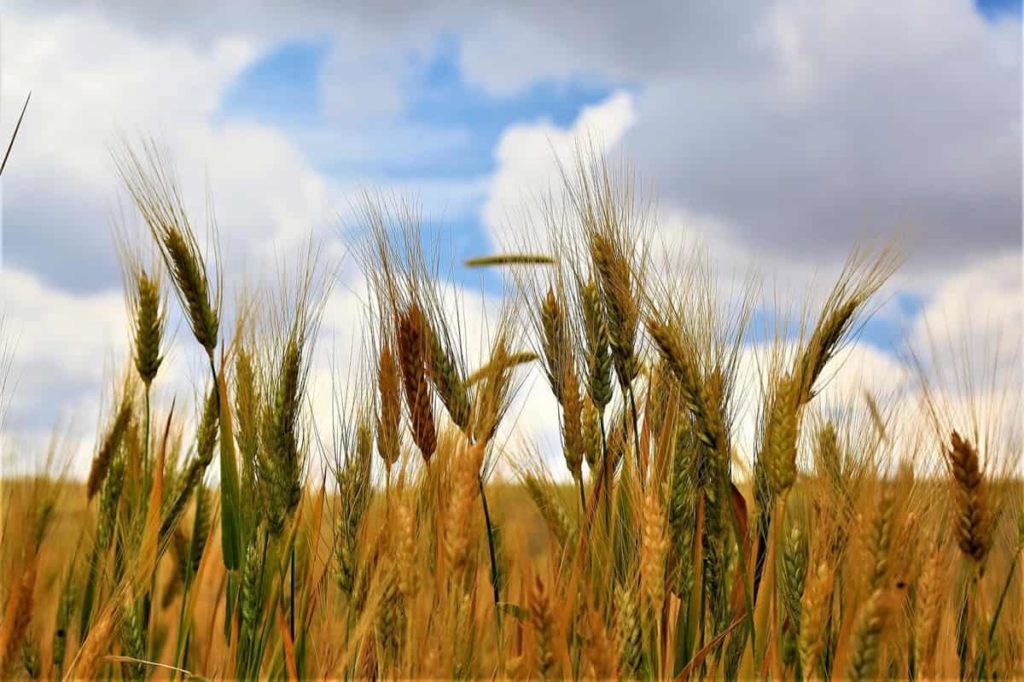
Cereals planting tips
The warm-season cereals are grown year-round in tropical lowlands and under temperate climate conditions during the frost-free season. Rice is usually grown in flooded fields, although some varieties are grown on dry land. Grains from other warm climates, such as millet, adapt to dry conditions. Cold cereals are well suited to mild climates.
Most species of a particular species are either winter or spring species. Winter varieties are sown in the fall; sprouts grow and grow vegetatively, then become dormant in the winter. They begin to sprout again in the spring and mature in late or early summer. This cultivation system maximizes water and frees the land for another crop early in the growing season.
Winter varieties do not bloom until spring because they require vernalization: exposure to low temperatures for a genetically determined time. Where winters are too hot for vernalization or too severe for the crop (which varies by variety), farmers grow spring varieties. Spring cereals are planted in early spring and mature later in the summer without vernalization. Spring cereals generally require more irrigation and produce less than winter cereals.
Conclusion
Cereals have excellent demand in the United States, Cereal farming in the USA is a profitable venture.
- Economical Aquaculture: A Guide to Low-Budget Fish Farming
- 15 Common Planting Errors That Can Doom Your Fruit Trees
- How to Make Houseplants Bushy: Effective Tips and Ideas
- Innovative Strategies for Boosting Coconut Pollination and Yield
- Pollination Strategies for Maximum Pumpkin Yield
- The Complete Guide to Chicken Fattening: Strategies for Maximum Growth
- Natural Solutions for Tulip Problems: 100% Effective Remedies for Leaf and Bulb-Related Issues
- Revolutionizing Citrus Preservation: Towards a Healthier, Greener Future
- Natural Solutions for Peony Leaf and Flower Problems: 100% Effective Remedies
- Maximizing Profits with Avocado Contract Farming in India: A Comprehensive Guide
- Natural Solutions for Hydrangea Problems: 100% Effective Remedies for Leaf and Flowers
- The Ultimate Guide to Choosing the Perfect Foliage Friend: Bringing Life Indoors
- From Sunlight to Sustainability: 15 Ways to Use Solar Technology in Agriculture
- The Ultimate Guide to Dong Tao Chicken: Exploring from History to Raising
- The Eco-Friendly Makeover: How to Convert Your Unused Swimming Pool into a Fish Pond
- Mastering the Art of Delaware Chicken Farming: Essentials for Healthy Backyard Flocks
- 20 Best Homemade Fertilizers for Money Plant: DIY Recipes and Application Methods
- How to Craft a Comprehensive Free-Range Chicken Farming Business Plan
- Brighten Your Flock: Raising Easter Egger Chickens for Beauty and Bounty
- How to Optimize Your Poultry Egg Farm Business Plan with These Strategies
- Subsidy for Spirulina Cultivation: How Indian Government Schemes Encouraging Spirulina Farmers
- Ultimate Guide to Raising Dominique Chickens: Breeding, Feeding, Egg-Production, and Care
- Mastering the Art of Raising Jersey Giant Chickens: Care, Feeding, and More
- Ultimate Guide to Raising Legbar Chickens: Breeding, Farming Practices, Diet, Egg-Production
- How to Raise Welsummer Chickens: A Comprehensive Guide for Beginners
- How to Protect Indoor Plants in Winter: A Comprehensive Guide
- Ultimate Guide to Grow Bag Gardening: Tips, Tricks, and Planting Ideas for Urban Gardeners
- Guide to Lotus Cultivation: How to Propagate, Plant, Grow, Care, Cost, and Profit
- Agriculture Drone Subsidy Scheme: Government Kisan Subsidy, License, and How to Apply Online
- Ultimate Guide to Raising Araucana Chickens: Breed Profile, Farming Economics, Diet, and Care
- Bringing Hydroponics to Classroom: Importance, Benefits of Learning for School Students
- Ultimate Guide to Raising Polish Chickens: Breed Profile, Farming Economics, Diet, and Care
- Ultimate Guide to Raising Australorp Chickens: Profile, Farming Economics, Egg Production, Diet, and Care
- Silkie Chicken Farming: Raising Practices, Varieties, Egg Production, Diet, and Care
- Sussex Chicken Farming: Raising Practices, Varieties, Egg Production, Diet and Care
- Homemade Feed Formulations for Livestock: Discover Cost-effective Starter to Finisher Feed Recipes